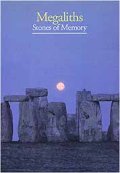<< Feature Articles >> Social History of the Standing Stone
Submitted by Thorgrim on Saturday, 03 September 2005 Page Views: 12207
Other ArchaeologyHow did the erection of standing stones start and are they found all over the world? There are massive standing stones (obelisks) more than 70 feet tall in Egypt and some even taller in Ethiopia. Madagascar, Easter Island, the Mediterranean islands, mainland Europe, Asia and Africa all have standing stones in one form or another so that suggests a universal desire to erect them, but why? Standing stones or menhirs barely get a mention in the literature whereas there is endless speculation about stone circles, stone rows, henges and cursus. There they are, all on their lonesome declaring a lost message and pointing to what or where we know not. Were the first standing stones natural boulders that were later dressed and moved? Did wooden poles, posts or stakes precede them? Leaving aside those stones that are part of circles and rows, does the secret of the solitary standing stone lie closer to us than we realise?
What are the various functions that a single standing stone could perform? Did a standing stone mark a tribal boundary or was it a waymark? Could it be a tribal totem pole? Does it mark the grave of a hero; commemorate a battle or perhaps a treaty? No one seems to be asking these questions so why shouldn’t I? If we look for understanding by limiting ourselves to the British Neolithic, we may not get very far. Are there parallels from other times and other places that may help us? If a wooden post was indeed the precursor of the standing stone (and it would have to be in stone less areas like East Anglia) then our first parallel is the carved and painted totem poles of North America. Can we see a legitimate possibility of a parallel here? Were our standing stones ever carved and painted? Did they embody tribal totems and identity? Were they set up in the centre of the village? There is some evidence for this in that the standing stone recently excavated at Stansted Airport was found buried in a pit in a Bronze Age village. We know that the stone based religions of the Neolithic underwent a change in the late Bronze Age and by the Iron Age the water cult was all important with very many votive offerings being cast into rivers, streams, wells and ponds. Did the Bronze Age people of Stansted bury their standing stone because it was no longer politically correct?
Were standing stones set up as boundary markers to show people where one tribal area ended and another began? Were they, in effect, “Keep Out” notices? Endowed with powers by the local shaman, perhaps they were feared as spirit markers as well. Or could stones have been helpful rather than prohibitive? Were they set up to guide travellers along trade routes, marking fords and safe crossings over rivers and across treacherous marshes? Anyone lost today in a moorland mist, knows the comfort of finding walkers’ cairns and the Dartmoor stone crosses are a lifesaver when the fog comes down. Is this a real clue at last? Did the stone crosses that were set up to mark the way for Christian pilgrims evolve from standing stones? Certainly some were made from standing stones ( Bennet’s Cross ). Roman standing stones were used not only to mark the way, but also to tell the traveller how far he had to go. They were called milestones and we have only just replaced them with metal ones. The Romans also set up stones as grave markers and memorials. That practice continued well after the Romans went home and Latin inscribed stones like Men Scryfa
continued into the so-called Dark Ages.
The Picts carved wonderful designs on to stone slabs - pagan at first and then Christian. Early Christian crosses were carved onto slabs of natural stone and later, stone crosses were erected – the free standing high crosses. Were these free standing stone crosses the direct descendants of the Neolithic standing stones? They seem to perform the same functions. They embody the Christian totem – Christ and the crucifixion. The Vikings carved serpents, dragons, Odin, Thor and Christ all mixed up on their standing stones and crosses such as the Gosforth Cross . We have already seen that stone crosses acted as guideposts on pilgrimage routes and some were certainly boundary markers to show the extent of monastic land. We still have stone gravestones of course so that is another similar function.
Perhaps the key to understanding the functions of standing stones lies in evolution and current practice. So we can surmise that standing stones evolved into Christian stone crosses ( Rudston our tallest standing stone means “cross stone” – rood was the Anglo-Saxon word for a cross and so perhaps that standing stone later had a cross added to it). Stone crosses evolved into preaching crosses, then into market crosses and finally into war memorials. Not all of our war memorials are crosses, of course – some, like London’s Cenotaph, resemble standing stones. All functions present and correct there then. So we still erect standing stones as graves and war memorials and even special way markers like the Meridian Obelisk on Pole Hill. In Somerset, they erected some beautifully carved standing stones at Glastonbury, Wells and elsewhere to mark the Millennium. It does seem that we still feel the need to erect stones to mark important places and events. They are durable and intended to outlast those that erect them. When we place a modern standing stone, we are surely leaving a message for future generations. Hasn’t it always been that way or have we just got a 5,000-year-old phallic fixation that won’t go away? I’ll leave you to make up your own minds.






 We would like to know more about this location. Please feel free to add a brief description and any relevant information in your own language.
We would like to know more about this location. Please feel free to add a brief description and any relevant information in your own language. Wir möchten mehr über diese Stätte erfahren. Bitte zögern Sie nicht, eine kurze Beschreibung und relevante Informationen in Deutsch hinzuzufügen.
Wir möchten mehr über diese Stätte erfahren. Bitte zögern Sie nicht, eine kurze Beschreibung und relevante Informationen in Deutsch hinzuzufügen. Nous aimerions en savoir encore un peu sur les lieux. S'il vous plaît n'hesitez pas à ajouter une courte description et tous les renseignements pertinents dans votre propre langue.
Nous aimerions en savoir encore un peu sur les lieux. S'il vous plaît n'hesitez pas à ajouter une courte description et tous les renseignements pertinents dans votre propre langue. Quisieramos informarnos un poco más de las lugares. No dude en añadir una breve descripción y otros datos relevantes en su propio idioma.
Quisieramos informarnos un poco más de las lugares. No dude en añadir una breve descripción y otros datos relevantes en su propio idioma.